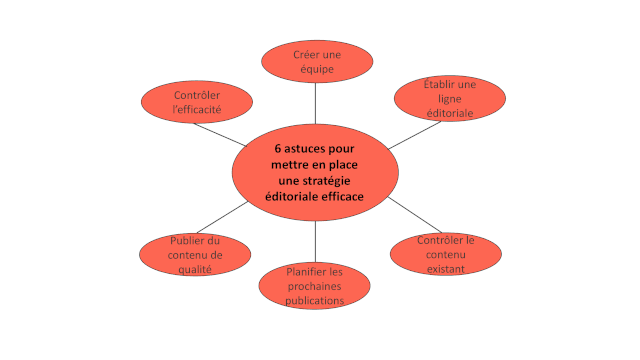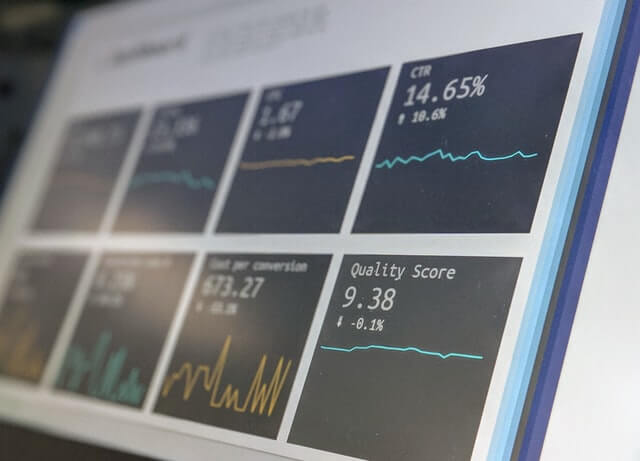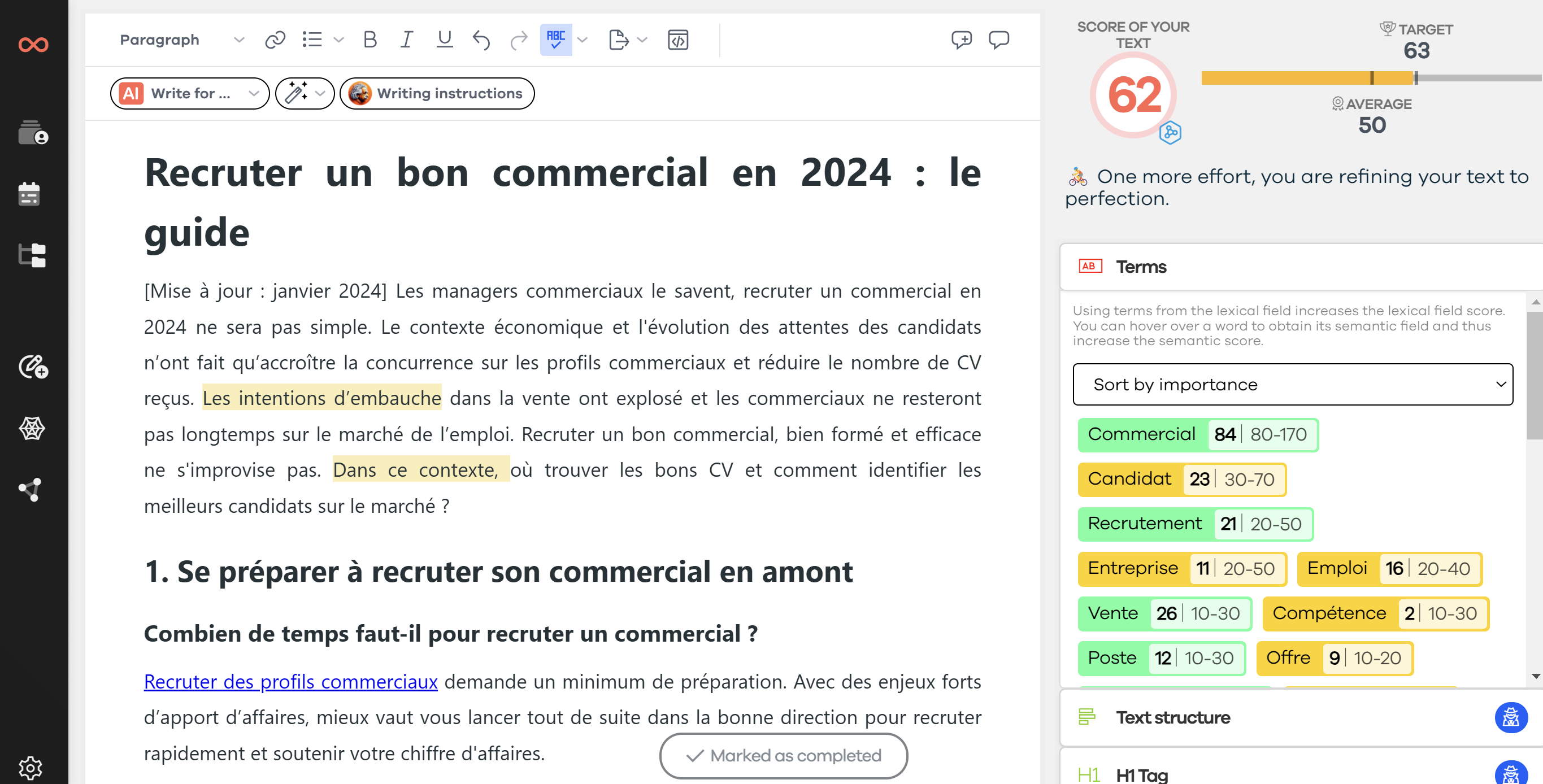There's nothing like a concrete example to understand a complex subject! Three months ago, I explained in detail how to succeed in content strategy. However, I stopped at concepts without offering a practical application of this process. So, I decided to remedy that! After a quick review of the fundamental elements of this essential content marketing technique, I invite you to discover the content strategy example that allowed Boris to fully live from his activity.
🔎 Recap of the 6 steps for an effective content strategy
To fully understand the content strategy example I will present below, I believe you must be well acquainted with the 6 rules for carrying out this type of work. Here are the elements to consider after establishing your budget dedicated to your content marketing.
- Create your editorial team: Get support from content marketing professionals to best implement your content strategy! Depending on your needs, you may need a content marketing manager, an SEO consultant, a SEA expert, a web copywriter, a community manager, a graphic designer, and a video editor.
- Establish your editorial line: Set up a guiding thread that will structure your content creation in the long term. This will allow you to create a unique brand image for your company, adapt to your buyer persona, and achieve your goals.
- Control your existing content: Make sure your online content matches your content strategy! To do this, consider checking your social media posts, audio and video publications, and blog posts. You can then update your content according to your digital communication tactics.
- Plan your upcoming publications: Carefully prepare your future content! Mainly, I recommend writing a style guide that includes all elements of your content strategy, a publication calendar, and a detailed brief.
- Publish quality content: Remember that to be visible on the Internet, you must focus on the quality of your content! Consider addressing the search intent of users and following the recommendations of Google EAT.
- Monitor effectiveness: Regularly check the results of your content strategy! It is necessary to analyze key performance indicators (KPIs), the evolution of your SEO (using, for example, Google Search Console Insights), and the profitability of your SEA campaigns.

🚀 Content Strategy Example
Now that you have an idea of the theory, I invite you to discover a practical example of a high-performing content strategy. The goal is for you to be able to directly apply to your business what you read in this article. By drawing inspiration from a content strategy model that generates convincing results, you will have all the support you need to succeed in yours!
Here is the concrete case of a digital marketing company (all names have been changed to protect the identity of the company). Of course, your theme is probably different from the one presented. However, I believe this example is general enough for you to easily adapt it to your needs.
Creation of the editorial team

Boris works alone to develop the visibility of his digital marketing company launched six months ago. He has been an SEO consultant for over ten years and masters the art of web writing. However, even though he has a good understanding of digital communication, he wants to recruit a team. This will allow him to delegate and optimize his communication across different channels and, as a result, save time and increase efficiency. Nevertheless, due to a lack of budget (and perhaps also the need to verify the smooth running of operations?), he decides that in addition to taking care of writing and organic search, he will lead the entire content strategy as a content marketing manager.
He goes on LinkedIn to find experienced freelancers recommended by other specialists. After two weeks of research and interviews, he recruits his editorial team:
- Marc: SEA expert;
- Lucie: Web graphic designer and YouTube video editor;
- Jean: Social media community manager.
Design of the editorial line

Surrounded by his newly recruited team, Boris describes his editorial line and asks for everyone's opinion to improve it. Indeed, each profession has its own vision of the most effective way to communicate across different channels. Thanks to this brainstorming, elements quickly fall into place and seem to meet the company's needs.
Brand image
Boris wants to convey a young, convincing, and dynamic message. He aims to create closeness with his clients and reassure them about his responsiveness and availability. He explains how he has adapted his writing style to this concept. Lucie suggests colors and a logo adaptation that would best highlight this brand image. Jean then explains the strategy that seems most effective to him for making this company philosophy felt on social media.
Target customer avatar
Boris targets young entrepreneurs who want to improve their visibility on the Internet. Aged 25 to 35, his target customers know what they want but don't know how to achieve it. He targets a French-speaking audience, mainly located in France, but also in Belgium, Luxembourg, and Switzerland. Marc is particularly interested in this theme and suggests concrete solutions to improve certain landing pages and perfectly target his future SEA campaigns.
Company objectives
Boris's objectives are clear! In one year, he wants to be able to live from his activity and stop his consulting or writing assignments. In five years, he wishes to have a team of collaborators who take care of his clients so he can focus solely on managing his company. In ten years, his ultimate desire is to sell his agency and take an early retirement in the tropics. Thus, everyone knows the direction the company will take in the future and what the most important factors to control are for this project to materialize.
Content control

Boris analyzes the optimization of all blog posts using his favorite tool (SEOQuantum 😉). Marc checks the results of the first paid ads on Google, Facebook, and Instagram. He also analyzes the relevance of the conversion pages on the company's website. Lucie checks the quality of the videos published on YouTube and the website's design, while Jean reviews each social media post and their engagement rate.
By doing so, they discover the most effective content and areas for improvement. Boris then takes care of updating the texts, while the rest of the team takes note of the optimal strategy to apply in the future. This preliminary teamwork allows them to tackle the next essential step for the success of their content strategy, namely planning the upcoming publications.
Preparation of future publications

Boris compiles all the information gathered during the previous analyses into an editorial style guide and a detailed brief dedicated to content creation. He then takes care of the creation of the publication calendar. He chooses to do it only for a three-month period to be able to adapt it as needed. His strategy is clearly defined: he will write one article per week on his blog, and Lucie will create infographics based on the key points. Each of these elements is then shared every three days on social media to energize the audience. He also plans for the creation of one video per month. Marc, on the other hand, intervenes only when there are special promotions or the launch of new offers, which is planned four times a year.
As a result, each actor in the content strategy knows exactly what tasks to perform. There is a clearly defined consistency that allows for effective organization and a clear identification of the company's brand image. Once this work is done, Boris will only have to monitor the proper implementation of these processes and ensure that his team carries out all this work according to the guidelines set out.
Content publication

The machine is up and running! Everyone is aware that quality is essential to meet both the needs of the user and Google. While Marc launches a perfectly tailored first SEA campaign for the target prospect and representing the company's needs, Lucie takes care of editing the next interview to be published on YouTube. She also decides to create an intro jingle that she adds to all the videos already online. Finally, she stays in constant contact with Boris and Jean for the creation of images for the blog and social media.
Blog publications
As planned, Boris publishes a weekly article on his blog. To start, he chooses to address a single theme, namely content marketing on the Internet. He covers a series of topics related to this theme and carefully crafts each text. He doesn't try to sell his services directly but ensures he provides comprehensive information to his target audience. He works closely with Lucie, who uses her graphic charter to enhance and personalize the visual content while adding value to the text.
Social media publications
The proper implementation of content strategy on social media is essential for promoting the company! On Instagram, Jean publishes each image created for the articles after adapting the format and adopts a friendly tone in short texts. On Facebook, he chooses a more serious tone and publishes quality, engaging textual content. He also actively participates in carefully selected discussion groups to convey the company's expertise to potential clients. To vary his communication, he decided to use the 80/20 rule: 80% informative publications for 20% promotional content. He logs in daily to constantly interact with his community.
Results analysis

After three months, Boris and his team examine the results of the content strategy implementation. They can then draw initial conclusions and adapt the company's communication based on the results obtained. They will then repeat this operation every month to leave nothing to chance.
KPIs
The indicators are green! The engagement rate on social media has skyrocketed, and the awareness index is growing. It's still a bit early to know the impact on customer loyalty, but the good news is that no client has gone elsewhere. However, sales have increased by 35% compared to the previous quarter before the content strategy implementation.
SEO
It's probably still a bit early to know the impact of the content strategy on organic search. However, the URLs and keywords positioned in the top 50 Google results have doubled in three months. Organic traffic has increased by 22% since the launch of the content strategy.
SEA
The first SEA campaign was not as effective as hoped. Marc plans to adjust the targeting and suggests to Boris to slightly change the landing page targeted. They also discuss optimizing the conversion funnel and believe that improvements need to be made in the authorization of email sequences.
Revenue
The company's revenue has increased by 26% in three months, which bodes well for excellent results by the end of the year. Of course, Boris doesn't earn much more than before, as he has increased his expenses by hiring an editorial team. However, if this growth continues, he will likely achieve his goals within the desired timeframe.
Two years after implementing this content strategy, the entire team is still active in the company. It has even grown with the arrival of Francine, an SEO web copywriter, and Elodie, a content marketing manager. Boris no longer accepts assignments in other areas because he earns enough money from his company's activity. In fact, he has already been able to recruit two digital marketing consultants, allowing him to meet the needs of his ever-growing clientele. He doesn't live in the tropics yet, but he has reduced his working hours and is completely satisfied with his results.
I hope this concrete example of content strategy will inspire you to develop your digital communication. Think about what you have already put in place and how you could adapt it based on what you just read. Can you apply this to your reality? Would you be able to implement the same steps based on this feedback? I suggest you start right away to make your own dream (or your clients') come true! Don't hesitate to take the plunge, as only trying leads to success. 😊
Need to go further?
If you need to delve deeper into the topic, the editorial team recommends the following 5 contents:

